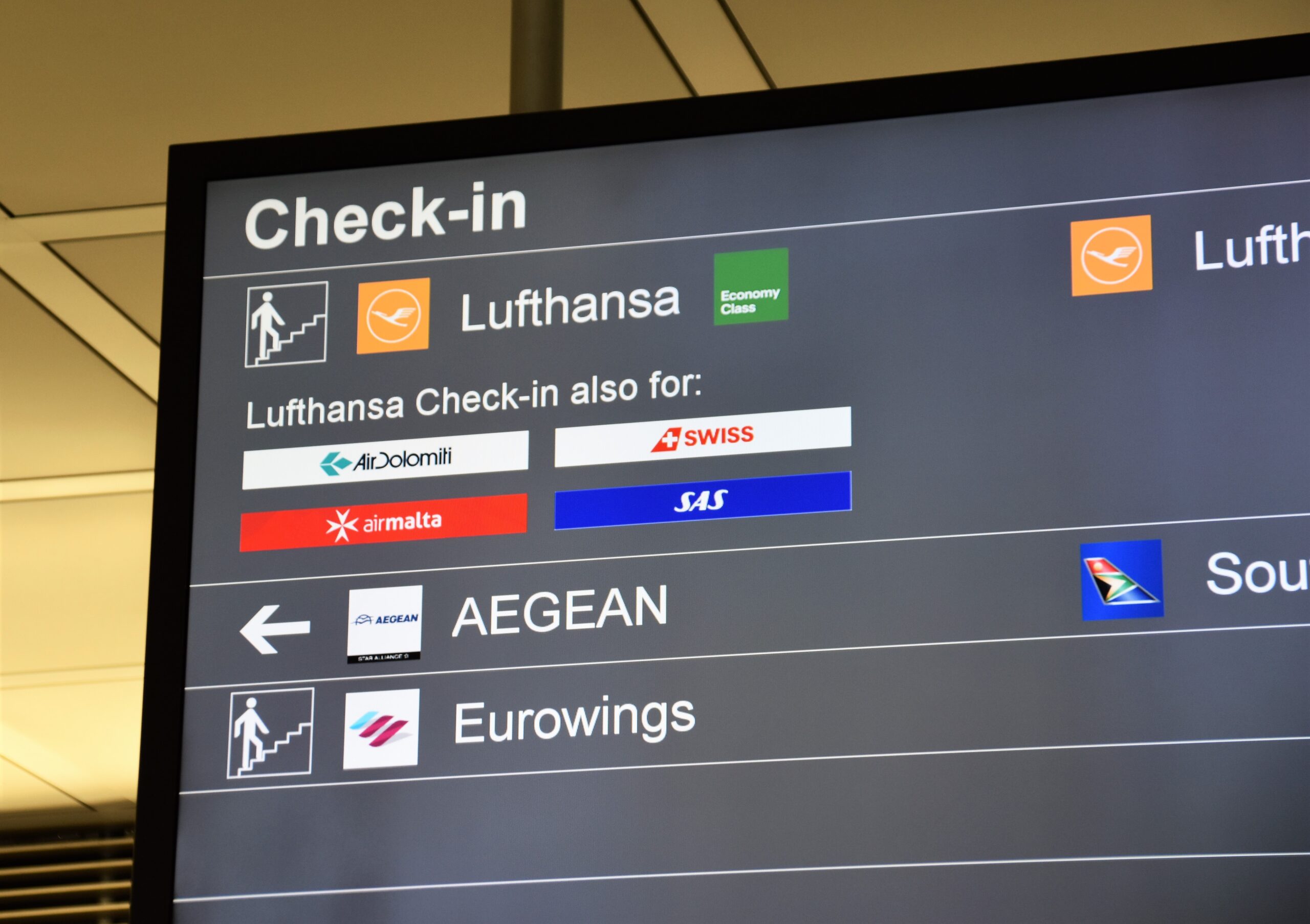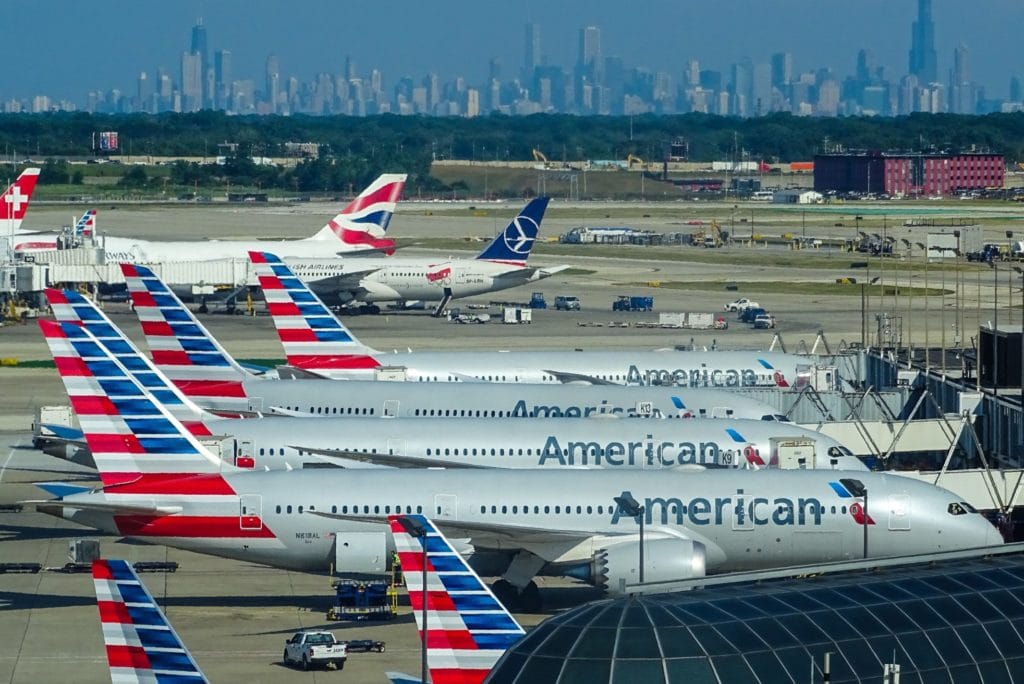

Getting one airplane loaded with passengers and baggage off the ground and back down again without incident is tricky enough. Repeating that feat thousands of times daily is called running an airline—a curious mix of big money, politics, technology, safety, security, and people.
Compounding all this is the notion that airlines must somehow turn a profit. In that never-ending quest, airline bosses—predisposed to be fiercely competitive—will sometimes enter into cooperative deals with one another to make the most of the costly assets of people and machines each possesses.
As we saw last week, such deals can pose thorny legal issues when U.S. District Court Judge Leo Sorokin struck down the so-called Northeast Alliance between American Airlines and JetBlue. In his decision, Sorokin found the alliance violated the Sherman Antitrust Act because it “substantially diminishes competition in the domestic market for air travel.”

Photo: Atlanta-Hartsfield International Airport. Courtesy of Skyler Smith / Unsplash
The judge has given the two airlines 30 days to unwind the arrangement, but the decision will likely be appealed. That would probably result in a stay being granted on the court order, buying American and JetBlue some time to figure out what to do next.
The case has once again spotlighted how complicated these agreements between airlines can be – both for the carriers and the consumers. But despite potential legal and operational issues, these cooperative arrangements have been a mainstay of the airline industry for decades.
Generally, airline cooperation falls into four categories: interline agreements, codesharing, joint ventures, and alliances.
In light of Judge Sorokin’s ruling, here’s a quick primer on the different kinds of cooperative agreements travelers can expect to find among airlines and what benefits fliers may see from each.
The most basic level of cooperation between airlines is called an interline agreement. When an itinerary requires two or more different carriers, these commercial agreements allow each partner airline to handle passengers and their baggage from origin to destination, issuing tickets under a single itinerary and dealing with rebooking in the case of flight delays or cancellations.

Photo: Courtesy of Denver International Airport.
Travelers should not assume every airline is connected with every other carrier through an interline agreement. Some have no interline agreements at all.
Where there is no interline agreement, the passenger would need a separate ticket from each airline for each leg and is responsible for retrieving baggage from Flight A and checking in again with Flight B. Booking outside an interline agreement can make recovering from irregular operations, missed connections or lost luggage more problematic for the traveler.
A codeshare agreement goes deeper into the inner workings of airline schedules. For example, you may have noticed as you scan the flight board at the airport that while the gate number, departure time, and destination remain the same, the airline names and flight numbers to a particular destination may scroll through.
That’s because that particular flight is part of a codeshare arrangement. Under a codeshare, one airline puts its code (a two-character alphanumeric code assigned by IATA unique to each carrier) and flight number on a flight operated by another airline.

Photo: Courtesy of Miguel Angel Sanz / Unsplash
A codeshare agreement allows two or more carriers to market the same flight under each airline’s code and flight number and publish and market that flight as part of its own schedule. So, for example, a traveler wishing to fly nonstop from New York JFK to Seoul Incheon may book Delta flight DL9013 but fly aboard Korean Air flight KE086.
The main advantage for Delta Air Lines, in this case, is the ability to offer their customers direct flights to Seoul, while Korean Air reaps the benefits of Delta’s considerable marketing muscle in the US and its feeder network into New York.
Thus, airlines can market an expanded network without the expense of standing up their operations in every destination. Conversely, they can cut underperforming routes more readily, allowing them to respond to market changes.
Travelers also benefit from more convenient shopping and booking—particularly on multi-city, multi-carrier itineraries—and the flexibility to choose a booking that maximizes their loyalty points.
The American-JetBlue tie-up in the Northeast branded itself as an alliance while Department of Justice lawyers argued the business arrangement was “a de facto merger.” However, it was neither. What the agreement more closely resembled was a joint venture (JV).
Under a JV agreement, airlines can coordinate schedules and share revenues—two things that American and JetBlue did in their Northeast Alliance—and set prices, the one thing the two airlines agreed not to do.
Establishing a joint venture is a huge business decision that combines partner airline operations, revenue, and marketing efforts. Airlines in a joint venture essentially operate as one carrier; the paint on the outside of the airplane may change, but the timetables, fares, and, to a limited extent, the inflight experience and loyalty benefits are all fixed by the partner airlines.
To allow this kind of collaboration opens several cans of regulatory worms. First, it requires government agencies to review the deals and grant something called antitrust immunity, which Judge Sorokin noted the JetBlue-American deal lacked.

Photo: Courtesy of Delta Air Lines
Some of the most relevant airline-specific joint ventures in the U.S./foreign market are Delta Air Lines and Air France-KLM, Delta Air Lines and LATAM, American Airlines and British Airways/Iberia, and United Airlines and Lufthansa Group.
A JV can be good for consumers, as it can expand route options and schedules. But on the other hand, it essentially reduces the number of players in the market and diminishes competition which can drive up prices. This is why proposed JVs and mergers are scrutinized so keenly by government competition watchdogs like the DOJ before they receive the OK.
While American and JetBlue styled their Northeast operation as an “alliance,” the arrangement didn’t fall in that category. Essentially, an alliance is a club that member airlines pay dues to join and agree to reimburse one another for the cost of certain benefits delivered to passengers of fellow member airlines.
Airline alliances were formed in the late 1990s to create global networks to expand access to more destinations, filling in geographic gaps in even the largest legacy carrier’s route map. Alliances also make it easier for travelers to earn points and have status recognized across partner airlines.

Photo: United Airlines Boeing 777-300. Courtesy of Chris Leipelt / Unsplash.
In addition, alliances offer at least the possibility of more streamlined passenger connections, although that promise is not always realized in terms of consistent travel experiences from carrier to carrier.
While codesharing between alliance airlines is not a quid pro quo for membership, many carriers within the alliance will also enter reciprocal codeshare agreements with alliance partners. Those airlines often have extensive codeshare arrangements with other carriers outside the alliance.
For example, Turkish Airlines is a member of Star Alliance and codeshares with 16 of its alliance partners. However, Turkey’s flag carrier also has codeshare arrangements with an additional 41 airlines, many of whom are members of one of the other two alliances.
The Big Three alliances are Star Alliance—the oldest and largest with 26 member airlines—SkyTeam, which has 19 members, and Oneworld, with 15 member airlines. Today, according to data from OAG, 45 percent of the world’s scheduled airline seats are operated on carriers belonging to one of these three alliances.

Photo: Courtesy of Fasyah Halim / Unsplash
However, as with all things, the prolonged downturn has hit COVID, alliances in travel, and even slower to recover than the broader market. According to 2022 figures from OAG, global airline capacity was still 17.8 percent below 2019 levels, Oneworld was 18.5 percent below 2019 levels, SkyTeam was 23 percent below, and Star Alliance was 24 percent below.
What’s been making up the difference is the rise of low-cost carriers. The pandemic has accelerated this trend that began even before 2020. While nearly half of the world’s air travel is on alliance members, fully 31 percent flies aboard LCCs.
Cirium recently reported that Dublin-based Ryanair had become the fifth-largest carrier in the world, behind American, United, Delta, and Southwest.
Of course, this is just a brief overview of the competitive-cooperative landscape in the airline industry. Mergers and acquisitions (Think: the pending JetBlue-Spirit deal, and airline operating groups (British Airways-Iberia parent IAG or the Lufthansa Group come to mind) leave plenty of room for exploring new partnerships, such as the American-Alaska Airlines West Coast International Alliance.
So while airlines continue to tout traditional alliance memberships, joint ventures, and codesharing as valuable marketing messages, individual carriers will always take a pragmatic – and very competitive – approach to establishing those cooperative arrangements which best leverage their unique brands and loyal travelers.